This article needs additional citations for verification .(August 2014) |
The Interlock System is R. Talsorian Games' proprietary role-playing system.
This article needs additional citations for verification .(August 2014) |
The Interlock System is R. Talsorian Games' proprietary role-playing system.
Interlock was a game system by R. Talsorian Games based on a simple system of adding a bonus to a roll on a 10-sided die. [1] : 208 Mekton II (1987) – the third edition of R. Talsorian's mecha game – was the first game to use the full-fledged Interlock system, and featured point-based characters with a character background system adapted from the original Mekton , though in a more complex and comprehensive form called Lifepaths. [1] : 208 Cyberpunk 2013 (1988) was the second design to feature R. Talsorian's Interlock system. [1] : 208 Cyberpunk introduced a new combat system to the original Interlock system called "Friday Night Firefight", while the second edition of the game, Cyberpunk 2020 (1990), made further improvements on the Interlock system resulting in what is now known as "Standard Interlock". [1] : 209
Interlock is one of the direct parents of the Fuzion system (the other is the Hero System). The Interlock System is "skill-based"—characters are created by choosing skills for them, and by advancing those skills individually, rather than by choosing character class packages. The Interlock System is used primarily in the Cyberpunk 2020 and Mekton role-playing games. A variant of the Interlock System is used in Teenagers from Outer Space and the Japanese Gundam Senki RPG.
Stats and skills are both rated on a scale of 0-10 with 0 representing no ability/no training and 10 representing the maximum ability possible for a human being. A typical skill roll will range from 12-20 for most tasks, so a skill 10 + stat 10 will succeed at virtually any task barring a critical mishap, while a skill 0 + stat 2 (minimum statistic level for a human character) will fail at any but the very simplest task, and even then will succeed only on a critical success. Interlock builds on the typical skill-based paradigm by offering "template" (Mekton) or "profession" (Cyberpunk) packages that give specialized abilities to characters that take these packages.
There are nine Attributes: Intelligence (INT), Reflexes (REF), Cool (COOL), Technical Ability (TECH), Luck (LUCK), Attractiveness (ATT), Movement (MOVE), Empathy (EMP), and Body (BOD). Characters must have a starting Attribute stat minimum of 2 and a system stat maximum of 10.
In Cyberpunk and Cybergeneration Empathy is very important. It not only controls interpersonal interactions but it also determines how much cyberware you can install. Every piece of cyberware has a Humanity Cost that reduces the character's base Empathy. A rating of "0" or less means the character has become psychotic and can no longer be played.
The Interlock System is best known for its Lifepath system, a storytelling device used to create character backgrounds without particular direct benefit or drawback to the character, avoiding min-maxing.

The Generic Universal RolePlaying System, or GURPS, is a tabletop role-playing game system designed to allow for play in any game setting. It was created by Steve Jackson Games and first published in 1986 at a time when most such systems were story- or genre-specific.
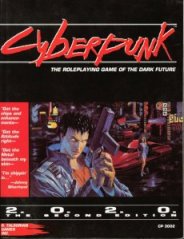
Cyberpunk is a tabletop role-playing game in the dystopian science fiction genre, written by Mike Pondsmith and first published by R. Talsorian Games in 1988. It is typically referred to by its second or fourth edition names, Cyberpunk 2020 and Cyberpunk Red, in order to distinguish it from the cyberpunk genre after which it is named.
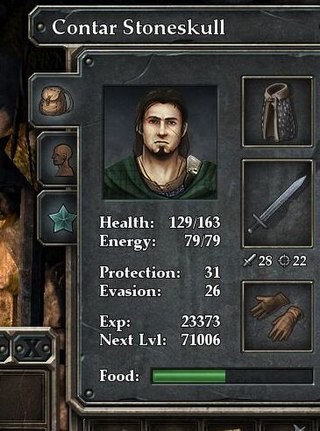
An experience point is a unit of measurement used in some tabletop role-playing games (RPGs) and role-playing video games to quantify a player character's life experience and progression through the game. Experience points are generally awarded for the completion of missions, overcoming obstacles and opponents, and successful role-playing.
A generic or universalrole-playing game system is a role-playing game system designed to be independent of setting and genre. Its rules should, in theory, work the same way for any setting, world, environment or genre in which one would want to play.
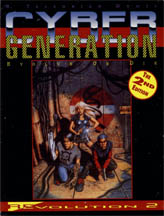
CyberGeneration is a follow-up to the R. Talsorian's Cyberpunk 2020 role-playing game. CyberGeneration was originally published as a supplement for Cyberpunk, but later re-released as a fully featured game in its own right under the title CyberGeneration Revolution 2.0. It is set in the year 2027, 7 years after the events in Cyberpunk 2020. The game's timeline doesn't correspond with that of the later third edition of Cyberpunk, which makes no mention of any of its contents or setting elements.

R. Talsorian Games (RTG) is a publisher of role-playing game books and accessories. Originally based in Berkeley, California, but moved to Renton, Washington in 1997. Their titles include the Cyberpunk 2020 series and anime-related titles such as Dragonball Z. Their major product line today is the Fuzion system.
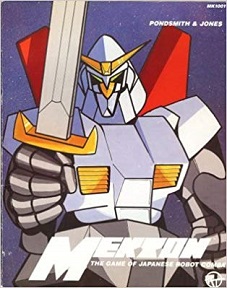
Mekton is a role-playing game which centers on the conventions of mecha anime and science fiction. It has seen several editions since its introduction in 1984, the most recent, Mekton Zeta being first published in 1994.

Fuzion is a generic role-playing game system created by the collaboration of R. Talsorian Games and Hero Games. The rights to Fuzion are jointly held by Mike Pondsmith of R. Talsorian Games, along with Steve Peterson and Ray Greer of Hero Games. Fuzion is a combination of the Interlock System,, and the HERO system. Fuzion is an adaptable system which can be played in any genre and setting imaginable.

A role-playing game system, is a set of game mechanics rules used in a tabletop role-playing game (TTRPG) to determine the outcome of a character's in-game actions.

Character creation is the process of defining a player character in a role-playing game. The result of character creation is a direct characterization that is recorded on a character sheet. This may include a representation of the character's physical, mental, psychological, and social attributes and skills in terms of the specific game's mechanics. It may also include informal descriptions of the character's physical appearance, personality, personal back-story ("background"), and possessions. Games with a fantasy setting may include traits such as race, class, or species. Character creation is the first step taken by the players in preparation for a game.

Michael Alyn Pondsmith is an American roleplaying, board, and video game designer. He is best known for founding the publisher R. Talsorian Games in 1982, where he developed a majority of the company's role-playing game lines. Pondsmith is the author of several RPG lines, including Mekton (1984), Cyberpunk (1988) and Castle Falkenstein (1994). He also contributed to the Forgotten Realms and Oriental Adventures lines of the Dungeons & Dragons role-playing game, worked in various capacities on video games, and authored or co-created several board games. Pondsmith also worked as an instructor at the DigiPen Institute of Technology.

A statistic in role-playing games is a piece of data that represents a particular aspect of a fictional character. That piece of data is usually a (unitless) integer or, in some cases, a set of dice.
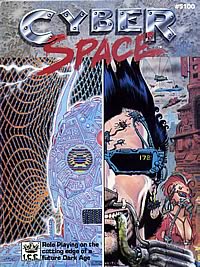
Cyberspace is a near-future cyberpunk role-playing game published by Iron Crown Enterprises (I.C.E.) in 1989 using a revised set of rules from their previously published Space Master role-playing game.

Cyberpunk: The Collectible Card Game, also known as Cyberpunk, the CCG and Cyberpunk CCG, is an out-of-print collectible card game designed by Peter J. Wacks, based on R. Talsorian Games' dystopian near-future role-playing game Cyberpunk 2020.

Bubblegum Crisis is a near-future cyberpunk role-playing game published by R. Talsorian Games in 1996 that is based on the anime television series Bubblegum Crisis.

Dragon Ball Z: The Anime Adventure Game is a role-playing game published by R. Talsorian Games in 1999 that is based on the Dragon Ball Z anime.
Steve Peterson is an American game designer who has worked primarily on role-playing games.
Ray Greer is a game designer who has worked primarily on role-playing games.

Hardwired: The Sourcebook is a supplement published by R. Talsorian Games in 1989 for the dystopian near-future science fiction role-playing game Cyberpunk.

Interface is a game magazine published by Prometheus Press between 1990 and 1992 that was licensed to publish articles about R. Talsorian Games's dystopian near-future role-playing game Cyberpunk.